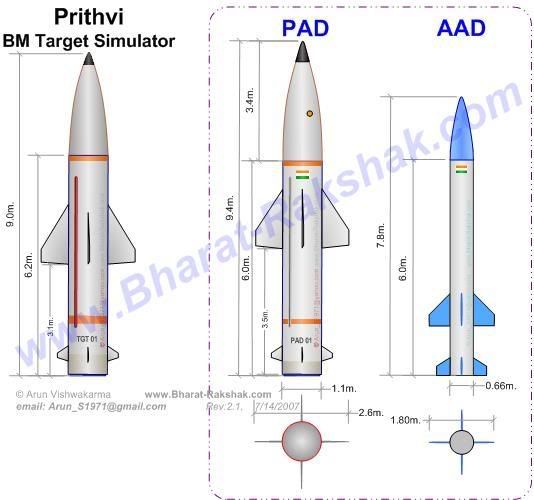America thwarted
Vladimir Radyuhin
Russia's test last week of two missiles shatters Washington's dreams of nuclear supremacy.
IT MAY prove to be Washington's biggest strategic miscalculation in decades. Its assessment of Russian defence capabilities was blasted to pieces last week when the latter tested two new missiles.
In one of the tests, a new long-range nuclear-capable missile armed with multiple warheads launched from the cosmodrome in Plisetsk successfully hit targets on the Kamchatka Peninsula thousands of miles away. On the same day Russia test-fired a high-precision tactical cruise missile.
All U.S. defence planning since the break-up of the Soviet Union was based on the assumption that Russia would never regain its military strength. This opened the way for the U.S. to attain decisive strategic superiority.
The Bush administration in 2001 unilaterally abrogated the U.S.-Russian Anti-Ballistic Missile (ABM) Treaty, which for 30 years acted as a deterrent to nuclear conflict. It stood in the way of U.S. plans to build a national missile shield that would give it immunity from a Russian missile attack and tip the strategic balance in Washington's favour.
The U.S. revived the Star Wars programme of the Ronald Reagan administration, which had been shelved because it was deemed incapable of intercepting the thousands of warheads the Soviet Union could launch either in a hypothetical first strike or in retaliation for a U.S. attack. However, with the Russian missile arsenals rapidly shrinking, the "Son of the Star Wars," as the new programme was dubbed, stood a good chance of coping with the task, U.S strategists argued.
Many Russian experts offered similar assessments. The Moscow-based AST think tank estimated that at the current rate of re-armament Russia would have just 400-500 nuclear warheads by 2020, half of which the U.S. global missile system would be able to intercept even if they survived a U.S. first strike. This was one reason why Washington said it was not interested in any new arms control pacts with Moscow after the expiry of the 2002 Treaty on the Reduction of Strategic Nuclear Arsenals, which called on both nations to cut their deployed warheads to between 1,700 and 2,200 deployed warheads by 2012.
Missiles in eastern Europe
In 2004, the U.S. began to deploy missile interceptors in Alaska and California. Earlier this year it announced plans to station some missiles in Poland. Washington insists its missile shield is not directed against Russia and is intended to defend against threats from "rogue states" such as North Korea and Iran. Russia does not buy this explanation. It regards the U.S. missile defence plans as a direct threat to its nuclear deterrent.
As a top Pentagon missile-defence official put it, the U.S. missile shield is "the missing link to a first strike." In other words, it would be valuable primarily as an offensive, not a defensive weapon — as an adjunct to a U.S. first-strike capability. This is not to say that the U.S. plans to launch a nuclear attack on Russia. But nuclear superiority would enable Washington to dictate to Moscow.
President Vladimir Putin promised in February a "highly effective response" to any U.S. efforts to deploy missile defences. The response has come earlier than anyone expected.
The new long-range missile, RS-24, test-fired last week carries six nuclear warheads that can manoeuvre in the final stages of the flight to evade any missile defences. It will serve as the main land component of the country's strategic nuclear triad until the middle of this century, Russia's Defence Ministry said in a statement.
The RS-24 will replace Soviet-era RS-18 (Stiletto) and RS-20 (Satan) heavy multi-warhead intercontinental missiles, which today make up the backbone of the Russian nuclear forces, but will have to be decommissioned by 2015-2017, when they reach the end of their service life. All Soviet heavy missiles were manufactured in Ukraine, and after the break-up of the Soviet Union it was widely assumed that Russia would not be able to build such missiles anymore.
The induction of the multi-warhead mobile RS-24 will vastly improve Russia's ability to replenish its nuclear stockpile. Until now Moscow has been building only single-warhead Topol-M missiles at a rate of six to 10 missiles a year, which could not compensate for the decommissioning of multi-warhead missiles. A similar number of RS-24 missiles will add six times more warheads to the country's nuclear inventory.
The test-firing of the RS-24 led to a radical reassessment of Russia's future nuclear potential. Defence experts now predict that by 2015 Russia will have about 2,000 independently targeted nuclear warheads mounted on mobile launchers and capable of busting any missile shield the U.S. might build.
In another big surprise, Russia last week successfully tested a new mobile short-range missile that can knock out missile interceptors the U.S. plans to deploy in Eastern Europe and other regions along Russia's borders. The Iskander-M cruise missile can skim the ground evading air defences and hit targets with a 2-metre precision. Its declared range is less than 500 km in accordance with a Soviet-U.S. pact banning medium-range missiles, but experts said it could easily be increased to 1,000 km or more. Russia had recently declared its intention to pull out of the treaty.
President Vladimir Putin said the new missile tests were part of efforts to "maintain strategic balance of forces," while First Deputy Prime Minister Sergei Ivanov, responsible for national defence, declared that "Russians can look calmly to the country's future in terms of defence and security."
It looks like the U.S. goal of achieving nuclear primacy could remain a pipe dream.





